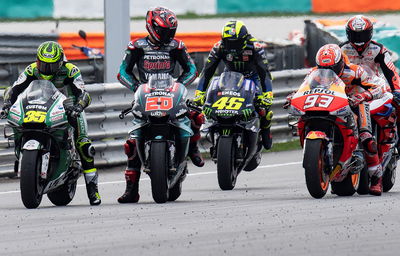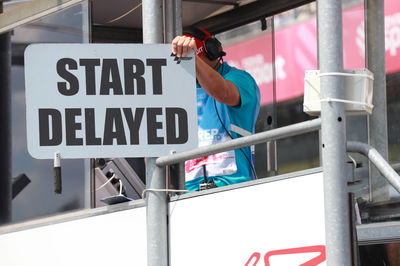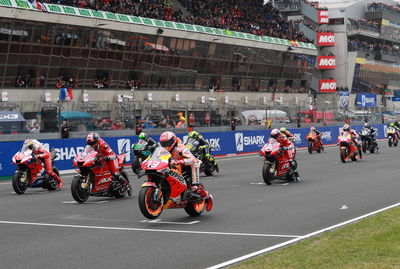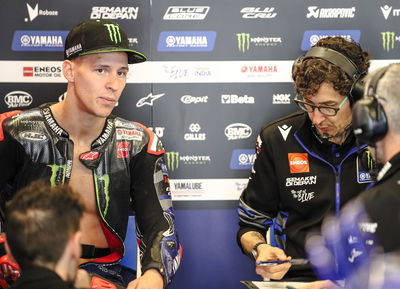Which MotoGP races do you drop?
As questions on the MotoGP calendar continue to mount at the same rate as the coronavirus spreads, the 2020 race schedule is likely to suffer major alternations and the unfancied reality of cancelling races.
Which races are most at risk depends on how MotoGP organisers and race promoters approach the ever-changing situation and what becomes the highest priority for those in power.

As questions on the MotoGP calendar continue to mount at the same rate as the coronavirus spreads, the 2020 race schedule is likely to suffer major alternations and the unfancied reality of cancelling races.
Which races are most at risk depends on how MotoGP organisers and race promoters approach the ever-changing situation and what becomes the highest priority for those in power.
While FIM President Jorge Viegas has opened the door to scheduling races into the start of 2021, realistically the situation gets tougher and tougher the longer the season cannot start meaning races are at risk from cancellation.
Dorna CEO Carmelo Ezpeleta is adamant he wants to complete the maximum number of races possible, with a minimum of 13 required to produce a full world championship under normal circumstances, but also acknowledges all options are on for alternative plans.
Peter McLaren and Haydn Cobb lay out how the 2020 MotoGP calendar could be shaped if a full season cannot be completed.
One Grand Prix per country
With Spain hosting four rounds and Italy hosting two, reducing the provisional 2020 calendar to one race per country would see it instantly chopped from 19 to 15 rounds.
For MotoGP, it coincides with the worst-hit regions in Europe which are facing the toughest tasks fighting the coronavirus meaning stricter measures will stay in place (more on that below). Keeping both the latter rounds for each country logistically is the easiest option seeing MotoGP head to Misano in September and then Valencia in November.
But losing Mugello, Jerez, Circuit de Catalunya and Aragon would be a heavy blow in terms of revenue and activity in key markets, not to mention a highly sensitive topic for the riders from those regions denied the chance to give their local fans something to smile about.
A solution could be to host each country’s race at the preferred location, so swapping the September date from Misano to Mugello for example, but it opens up greater complications with individual circuit contracts at risk of breaking agreements along with the complete rebooking of events for all involved.
Ongoing coronavirus restrictions
Ultimately, the key decisions will be dictated by, literally, where MotoGP can and cannot go. Of the countries that host a MotoGP, those that have recorded over 10,000 cases so far are: Italy, Spain, Germany, USA and France.
But these numbers are very active with each nation in a different part of their predicted cycle of infection rates. China still has the highest number of overall cases but is now reporting rapidly decreasing new cases having hosted the initial outbreak in Wuhan three months ago.
Therefore, an idea would be to head to locations least hit by the coronavirus first. That would duly invert the calendar by heading to non-European rounds, but the obvious problem that creates is getting permission for thousands of Europeans to enter countries looking to prevent the spread.
If a fast and accurate coronavirus test became readily available it would speed up decisions and could provide MotoGP the opportunity to head to non-European events, using a minimum crew of staff, with all of them tested for the coronavirus on arrival.
Plenty of ifs, buts and maybes, but with MotoGP keeping communications open with all race organisers and corresponding health authorities it should become a more viable option.
Crowd numbers
Before actually heading to each race, with the MotoGP calendar being drawn up weeks and months in advance, lining up the races with the biggest crowd attendances is an alternative to deciding what stays and what goes.
A pure statistical approach would be ranking events by 2019 crowd attendance and dropping the least popular.
That would mean the likes of Thailand, France and Austria would be firm favourites and priorities while Qatar (albeit MotoGP only), Australia and Japan would be the first to go.
Formula 1’s approach to the same problem has also included prioritising the highest bidders, a key reason behind the Monaco GP cancellation as it pays no money to host its race, meaning cash could act as a way to move up in the queue.

Postponed = cancelled
According to MotoGP’s most recent 2020 calendar update only the Qatar round (for the premier class) has been cancelled but could make a comeback if needed as a standalone race, while Thailand, United States and Argentina are all postponed.
There is growing certainty the subsequent races in Spain (Jerez), France and Italy (Mugello), which are all set to take place in May, are likely to join the postponement list shortly.
While the current postponements have already been filtered back into a revised calendar, trying to pull off the same task with three more becomes a near-impossible goal from a logistic and planning side.
With effectively all sport suspended until the coronavirus situation improves globally, it might be better to stick with the latest list of dates and filling in empty dates where possible up until there is no space left, leaving no alternative but to trigger cancellations.
Rapid rescheduling and tweaks to plans means flights, hotels and time-off needs to be booked and rebooked again, not only for teams and organisers but also for the fans, media and the rest of the travelling circus. Many will also not be able to make the new date and may have trouble getting their money back.
Logistics
This is why the logistical headaches also play a pivotal role. One of the very few things known at this stage is once the racing season eventually begins, it’ll be virtually non-stop with very few free weekends.
Two triple-headers are already scheduled as things stand, with doubts cast over the latter United States-Argentina-Valencia stretch, meaning events that are the most time consuming to reach or geographically far from any other rounds might need to be scrapped.
Some flyaway rounds have advantages already in place by being extremely close to an international airport (Sepang and Circuit of the Americas fall into this category) but others like Argentina and Thailand require a domestic connecting flight or long road journey.
Malaysia could benefit ‘next door neighbours’ Thailand given the relatively small distance between the two, while Qatar is a popular hub for flights between Europe and Asia and therefore a logical stop-off point between the two. But Japan, Australia, Argentina and the USA are several hours of flying from any other MotoGP round.
Weather
Within the schedule shuffling, organisers will also need to keep a close eye on the weather conditions and seasonal changes at each destination.
There is little point planning to go to Australia in the Southern hemisphere’s deepest winter months, especially when calls to move the Phillip Island race to later in the year to guarantee better conditions was already a key consideration after the 2019 event.
The same can also be said for hosting any European rounds from November onwards, not that it has stopped Valencia slotting into the final weekend before December, so even if Europe is open for business during the winter MotoGP will be stalled by meteorological restraints.
Going or returning to new MotoGP venues
A left-field suggestion has been to take the sport to circuits in locations not in the path of the coronavirus and to countries with no travel restrictions – even if that meant heading to venues that either used to be a fixture on the MotoGP calendar or are completely new destinations altogether.
While it raises excitement at the opportunities, the chances of this becoming a reality remains thwarted by a multitude of barriers.
MotoGP’s calendar is already suffering from overcrowding so adding new events is counterintuitive given the existing circuits all have contracts and will take priority.
No new MotoGPs are set to appear unless others drop off, while the idea of alternative venues came up when travel bans weren’t so widespread – hence the idea of running another Sepang race or heading to Portimao or Indianapolis.
But now travel bans and coronavirus restrictions are wider and growing week by week, setting up any new events would be met with all of the problems listed above – not to mention other issues like ensuring the circuit is up to FIM Safety Standards and hosting pre-event tests which were vital for new tracks like Finland and Thailand.











